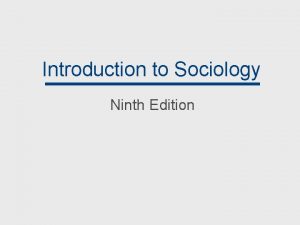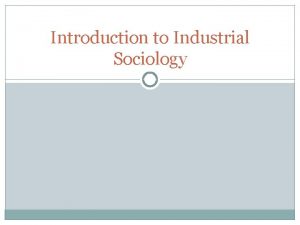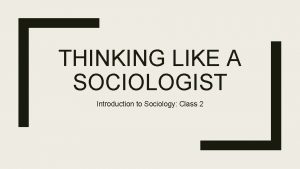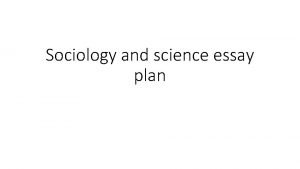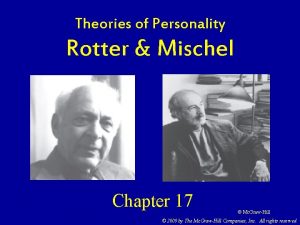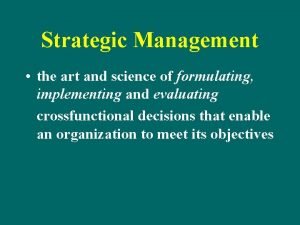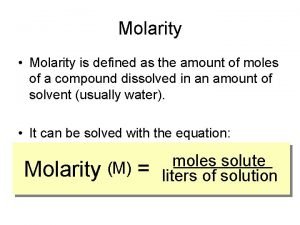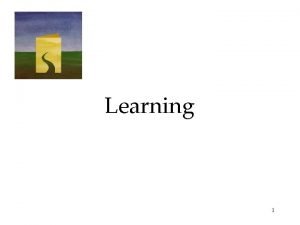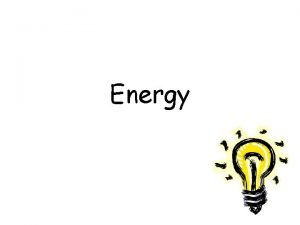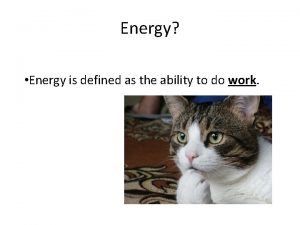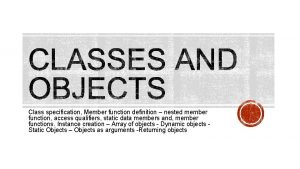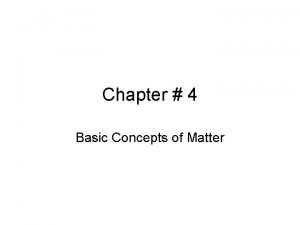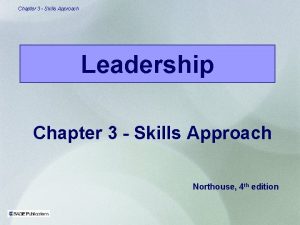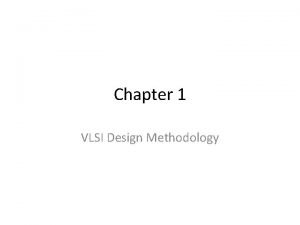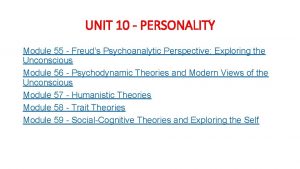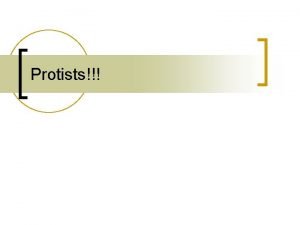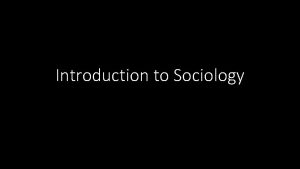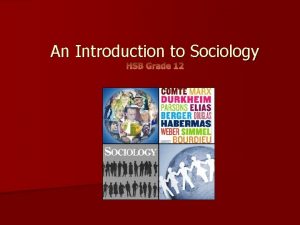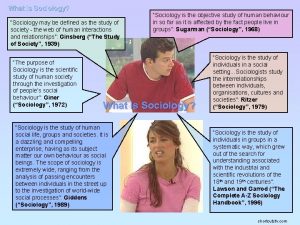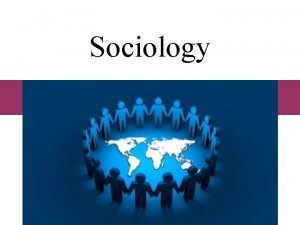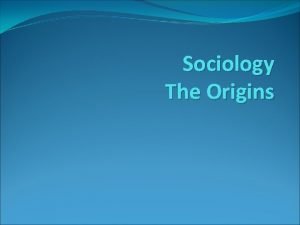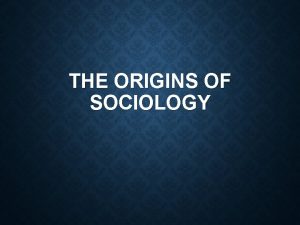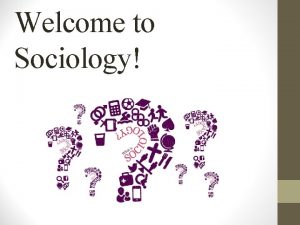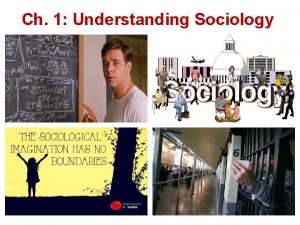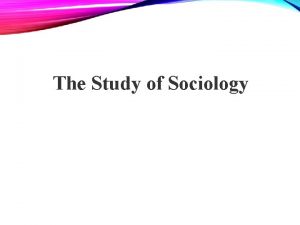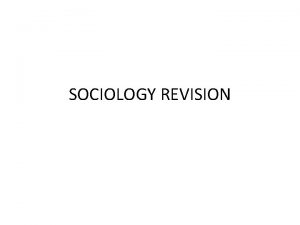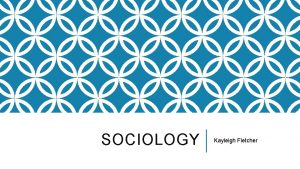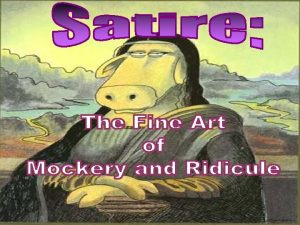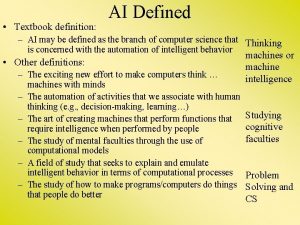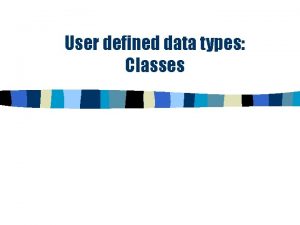Introduction to Sociology Sociology Defined What is sociology













































































- Slides: 77

Introduction to Sociology

Sociology Defined What is sociology? How does it differ from psychology, anthropology, etc. ? ? ? Isn’t it all just common sense? ?

Sociology is the systematic, scientific Are you being raised by study of human society two working parents? Vs. or social structure What % of American Sociology is always a families have two group focus, not an working parents? individual focus Social Structures are the patterned way in which people interact in social relationships 2010 census

Sociological perspective is interested in the patterns of behavior shared by member of a group or society and how actions and beliefs change society and culture overtime helps us to realize that society guides our thoughts and deeds - to see the general in the particular ~ Peter Berger Ex. Traveling abroad (Nothing makes you aware of home as much as being somewhere else)

The Sociological Perspective looks at group statistics to understand why certain patterns occur…

HOW DOES RACE EFFECT CRIME?

SEEK THE TRUTH!

MEDIAN INCOME

THE TRUTH HURTS!

U. S. College Enrollment Rates by Race and Ethnicity, 2005


NOTICING A PATTERN?

THE SOCIOLOGICAL PERSPECTIVE: PETER BERGER SEE THE GENERAL IN THE PARTICULAR HOW DOES THE CATEGORY I FIT INTO IN SOCIETY AFFECT ME? RICH VS. POOR = EDUCATION & SKILLS 1. SOCIOLOGISTS INDENTIFY GENERAL SOCIAL PATTERNS IN THE BEHAVIOR OF PARTICULAR INDIVIDUALS/GROUPS INDIVIDUALS ARE UNIQUE…BUT SOCIETY’S SOCIAL FORCES SHAPE US INTO “KINDS” OF PEOPLE GENERAL CATEGORIES TO WHICH WE BELONG SHAPE OUR PARTICULAR LIFE EXPERIENCES CONSIDER THESE SOCIETY ATTACHES MEANING TO AGE, SO WE EXPERIENCE DISTINCT STAGES IN OUR LIVES (ADULTS AT 18) CHILDREN = DEPENDENT, ADULTS = INDEPENDENT, OLD AGE = LOSE SOCIAL STANDING AND ANNOYINGLY DEPENDENT MORE EMOTIONAL, DEPENDENT, CAN RAISE KIDS, CLEAN, PROVIDE EMOTIONAL SUPPORT & MUST LOOK HOT? ? ? PEOPLE MORE LIKELY TO KILL THEMSELVES PEOPLE MORE LIKELY TO GO TO AND SUCCEED IN COLLEGE AND ENJOY A FAVORABLE QUALITY OF LIFE EVERY SOCIETY ATTACHES MEANING TO BEING MALE OR FEMALE THE SEXES HAVE BEEN SOCIALIZED INTO THEIR ROLES

Individual vs. Societal problems Sociologists never speak about “a person” but rather on categories of people What questions would a Sociologist ask in reference to this cartoon? What might they choose to scientifically investigate?

NY Times Reading.

Emile Durkheim ~19 th century pioneer Sociology encourages us to see personal choice in social context Ex. Emile Durkheim’s (sociology pioneer) research showed that the suicide rate was strongly influenced by the extent to which people were socially integrated with others Emile Durkheim

DURKHEIM’S STUDY OF SUICIDE MORE LIKELY TO COMMIT MALE PROTESTANTS WHO WERE WEALTHY AND UNMARRIED HAD HIGHER SUICIDE RATES PROTESTANTISM AND INDIVDUALISM LESS LIKELY TO COMMIT MALE JEWS AND CATHOLICS WHO WERE POOR AND MARRIED BEING CATHOLIC AND GROUP-ORIENTATION ONE OF THE BASIC FINDINGS: WHY? THE DIFFERENCES BETWEEN THESE GROUPS HAD TO DO WITH “SOCIAL INTEGRATION” THOSE WITH STRONG SOCIAL TIES HAD LESS OF A CHANCE OF COMMITING SUICIDE

Social Marginality Living on the margins of society: to be an outsider, not part of the dominant group In the United States what is the dominant group? Who live in the margins of society?

Discussion Describe an incident in which you were a new member of a group and in which your marginality made it easier for you to observe something about that group which was not evident to those who had been in it longer.

Global Perspective (Globalization) • Definition: The study of the larger world and our society’s place in it • Three types of nations in the world 1. 2. 3. The world’s HIGH INCOME countries are industrialized nations in which most people have relatively high incomes. – Approximately 50 countries The world’s MIDDLE INCOME countries have limited industrialization and moderate personal income. – Approximately 80 countries (most of Latin America, Eastern Europe, Asia, some of Africa) The world’s LOW-INCOME countries have little industrialization and most people are poor. – Approximately 60 countries (most of Africa and a few in Asia)

Global Perspective Global thinking is an important component of the sociological perspective for four reasons: 1. Where we live makes a great difference in shaping our lives 2. Societies, the world over, are increasingly interconnected, making traditional distinctions between “us” and “them” less and less valid. Provide some examples of cultural diffusion. (Consider, among other things music, film stars, foods, and sports)


Global Perspective 3. Many human problems faced in the U. S. are far more serious elsewhere. 4. Thinking globally is a good way to learn more about ourselves.

Sociological Imagination – the ability of individuals to see the relationship between events in their personal lives and events in their society Which object has the most meaning to you personally?

Which did you pick? ? What company makes the object you chose? Who sells the object? Who buys the object? Does everyone use this object? Are their other uses for this object? Does anyone suffer because of this object?

Sociological Imagination Helps us understand the effects of events on our daily lives C. Wright Mills – it helps us “grasp the connection between history and biography” Allows us to challenge conventional wisdom – ideas people assume to be true What assumptions can you make about welfare from interpreting this sign?

Applying the Sociological Perspective Applying the sociological perspective is useful in many ways… 1. It helps guide many of the laws and policies that shape our lives. 2. It leads to important personal growth and expanded awareness. 3. It serves as excellent preparation for the world at work. • Ex. Henry Ford set up a “Sociological Dept. ” to monitor the behavior of his workers in order to discourage them from spending their wages on vices, such as alcohol and tobacco

The Clark’s experiment Sociological investigation can impact public policy This study conducted by Dr. Kenneth Clark and Mamie Clark (1939) was used to overturn Plessy v. Ferguson Separate but equal = common knowledge Their studies found contrasts among African-American children attending segregated schools in Washington, DC versus those in integrated schools in New York A child was presented with two identical dolls, differing only in skin and hair color.

The Clark’s experiment Today? ? ? The child was then asked questions inquiring as to which one is the doll they would play with, which one is the nice doll, which one looks bad, which one has the nicer color, etc. The experiment showed a clear preference for the white doll among all children in the study. These findings exposed internalized racism in African-American children, selfhatred that was more acute among children attending segregated schools

n r u T r u Yo 1. Think of a problems that exist in society 2. SHARE 3. THE BIG QUESTION: How would a sociologist use sociological imagination to view the problem? 4. Is your solution addressing the societal point of view or your personal point of view?

Conformity Groups = 2+ members All groups encourage conformity Durkheim – groups are separate from the individuals who make them What you may do as an individual may not mirror what you will do in a group

Who are we as a culture? Culture is a way of life of a group of people--the behaviors, beliefs, values, and symbols that they accept, generally without thinking about them, and that are passed along by communication and imitation from one generation to the next. Conformity occurs in part because members have been taught to value the group’s way. What makes you part of the American Culture? How are we different/similar to other countries?

Cultural Variation Differences in social behaviors that different cultures exhibit around the world. What may be considered good etiquette in one culture may be considered bad etiquette in another. Human behavior varies from culture to culture and from time period to time period

BABIES

Theoretical Perspectives The BIG 3

How you interpret an event or an image is all based off of you experience. Influenced by beliefs and values It is all a matter of ….

Sociological Theory Theoretical Perspective: a set of assumptions (theory: a statement of how and why specific facts are related) about an are of study accepted as true The BIG 3 Theoretical approaches Functionalism (Structural Functional) Conflict Theory Symbolic Interactionism Each constructs a basic image of society that guides thinking and research What issues should we study? How should we connect the facts?

5 Key Concepts The basic building blocks that the major theories have in common Functional integration Each part/piece of a society makes a specific contribution that allows society to function together as a whole

5 Key Concepts Social structure Pattern of social behavior in a group or a society Acts as a framework by establishing the ways that people and groups are related based on location or status in the social structure Cannot be seen Social institutions – family, economy, religion, education, law, politics, etc. Based on the definition provided, explain how the concept of “family” is a social structure

5 Key Concepts Power the ability of one party to get other parties to do its will or to ensure that it will benefit from the actions of other parties What role does social media play in gaining power?

Big 5 Concepts Social actions The way in which someone’s actions are coordinated with his or her environment Graduate from high school Go to college? Trade school? Get a job? Then what? ? Culture Language, norms, values, beliefs, knowledge, symbols and physical objects that are shared by members of a society or group

Should you be offended? ? Depends on your culture!

Functionalism A theory that views society as a complex system whose parts work together to promote solidarity and stability Society is viewed as an integrated whole; a change in one part leads to changes in other parts How has technology changed society? Has society remained stable?

Functionalism assumes that societies tend to return to a state of stability after some upheaval has occurred. 1960 s This era did not revolutionize American society Changes were absorbed in the society Society emerges somewhat different but it is still recognizable as the same society How is modern society similar to the American society of the 1950 s? How is modern society different?

Functionalism Most aspects of society exist to promote a society’s survival and welfare; if they didn’t they would fail to survive Manifest functions: the recognized and intended consequences of any social pattern Ex? Latent functions: the unrecognized and unintended consequences of any social pattern Ex? Social Dysfunction: any social pattern that may disrupt the operation of society

It often leads to an increase of money (combined income), creation of families and the transmission of traditions and culture. Marriage is a relatively stable pattern of behavior for men and women in the United States May reinforce stereotypical male/female roles Divorce acts as a social dysfunction

Functionalism Values – broad ideas about what most people in a society consider to be desirable Society comes to a consensus on values Values influence social behavior As societies become more complex, consensus must be reinforced by more rules/laws Is it necessary for the United States to have local, state and federal laws? Should individuals be given choice in the laws they follow(civilians) or enforce (law enforcement)?

Marxism-Conflict Approach Conflict approach – a framework for building theory that sees society as an arena of inequality that generates conflict and change This is the reverse of functionalism Investigates how factors (social class, race, gender, etc. ) are linked to the unequal distribution of money, education and social prestige Sociologist look at the conflict between dominant and disadvantaged categories of people; those with power are able to constrain or limit other groups to promote their own special values and interests

Gender conflict approach – one important type of conflict analysis, focuses on inequality and conflict between men and women Closely related to feminism – the advocacy of social equality for women and men

Race conflict approach – another important type of conflict analysis, focuses on inequality and conflict between people of different racial and ethnic categories Racism in advertising

Symbolic Interactionism Symbolic interactionism– a framework for building theory that sees society as the product of the everyday interactions of individuals; the interactions among people Micro-level orientation – focuses on patterns of social interaction in specific settings Macro-level orientation – (functionalism and conflict approaches) they focus on broad social structures that shape society as a whole

Symbolic Interactionism To understand social interactionism you need to understand symbols Symbol – anything that stands for something else and has an agreed-upon meaning attached to it Meaning is determined by those who create or use the symbol If people in a group do not share the same meaning for a symbol confusion results

What is the meaning of this symbol? VS.

Symbolic Interactionism 3 Basic Assumptions We learn the meaning of a symbol from the way we see other reacting to it Once we learn the meanings of symbols we base our behavior on them Discontinue speaking We use the meanings of symbols to imagine how other will respond to our behavior Internal conversations about how to behave; may lead us to change/alter our behavior Practice

Symbolic Interactionism Erving Goffman Dramaturgy- human interaction is depicted as a theatrical performance Presentation of self: a person’s efforts to create specific impressions in the minds of others What are some examples of when we do this?

Symbolic Interactionism Dramaturgy As we present ourselves in everyday situations, we reveal information, consciously and unconsciously, to others. Our performance includes the way we dress, the objects we carry, and our tone of voice and gestures. We may vary our performance according to where we are (the set). Ex. School, church, mall, concert….

Dramaturgy – Nonverbal Communication Nonverbal communication: communication using body movements, gestures, and facial expressions rather than speech Culture specific Close attention to nonverbal communication is often an effective way of telling whether or not someone is telling the truth Body language can contradict verbal communication. Is hypocrisy really such a bad thing, or is some dishonesty necessary to civilized life? What would life be like if we told the truth all of the time, in all interactions?

Dramaturgy - Gender and Performances Women tend to be socialized to be more sensitive than men to nonverbal cues Gender affects personal performance in areas such as: Demeanor: the way we act and carry ourselves People with power enjoy more freedom in how they act Use of Space (personal space): the surrounding area over which a person makes some claim to privacy Power leads to more space Men occupy more space due to socialization (men need “turf” women should be dainty) Men are more likely to intrude upon a woman’s personal space, if the reverse were to happen the man may interpret the action as a sign of sexual interest.

Staring, smiling, touching Eye contact: women hold eye contact more in conversations, men use it to exert dominance Touching: suggests intimacy and caring, outside of intimate relationships, it is something that men usually do to women

Smiling: a sign of pleasure or a sign of submission (trying to please someone) Women smile more than men.

Putting it all together….

Idealization Performances usually idealize our intentions. Our intended behavior; putting your best foot forward Embarrassment and tact are additional important dramaturgical concept When our intended behavior is not expressed we may feel embarrassment Own goals We will utilize tact, an attempt to save face, to alleviate embarrassment; for ourselves or others Handout – Dramaturgical Analysis

The Historical origins of Sociology

Auguste Comte French Father of Sociology Comte believed that social behavior needed to be scientifically studied. to understand society as it actually operates. positivism – scientific observation to study society Knowledge we are “positive” or sure of can only be know if scientifically studied

Comte Continued Distinguished between Social Statics – study of social stability and how order is maintained Family Religion Language Division of labor Social dynamics – study of social change; revolutionary progress Civil rights Women’s rights

Karl Marx 1818 -1883 Philosopher and journalist Marx’s approach is based on materialism, which asserts that the production of material goods shapes all aspects of society. Identified 2 major social classes in industrial societies Bourgeoisie – the CLASS who own the means (factories/machines) to produce wealth Capitalist – the PERSON who owns or controls the means for producing wealth Proletariat – working class; labor for the bourgeoisie and paid just enough to stay alive

Class Conflict - Marx Class Conflict – ongoing struggle between the bourgeoisie and the proletariat Felt that capitalism would eventually fall to class conflict and communism would be the result Communist Smurfs

Awareness and conflict - Marx In order for conflict to occur, the proletariat must achieve class consciousness (workers recognition of their unity as a class in opposition to capitalists and ultimately, to capitalism itself) Then workers must organize themselves and rise in revolution. Internally divided by their competitive search for profits, the capitalists would be unable to unify to effectively resist their revolution

Marx Continued Marx considered the economy the infrastructure on which all other social institutions were based. The institutions of modern societies, he argued, tend to reinforce capitalist domination. According to Marx, most people in modern societies do not pay much attention to social conflict, because they are trapped in False Consciousness Explanations of social problems that blame the shortcomings of individuals rather than the flaws of society

Emile Durkeim 1858 – 1917 France Society exists due to a broad consensus among its members Social fact - a pattern that is rooted in society rather than in the experience of individuals. Ex. Suicide – social factors have as much influence as psychological ones

Durkheim continued Preindustrial societies operated based on… Mechanical Solidarity - social bonds based on shared moral sentiments that unite members of preindustrial societies Strong dependence on tradition, social pressure to conform, consensus on values and beliefs Modern industrial societies operate based on… Organic Solidarity - social bonds based on specialization, that unite members of industrial societies This shift is accompanied by a decline in the level of trust between members of the society

Durkheim continued Durkheim warned of anomie (a societal condition in which individuals receive little moral guidance) Durkheim defined the term anomie as a condition where social and/or moral norms are confused, unclear, or simply not present. Durkheim felt that this lack of norms led to deviant behavior. Example – stem cell research, abortion rights…

Max Weber 1864 -1920 German Sociologists must discover the personal meaning, values, beliefs and attitudes underlying human social behavior Understanding could be achieved by Verstehen – mentally walking in another’s shoes

Weber continued The Industrial Revolution and the rise of capitalism both reflect the Rationalization of society the historical change from tradition to rationality as the dominant mode of human thought Considered industrial capitalism the essence of rationality, since capitalists pursue profit in whatever ways they can. Feared that the rationalization of society carried with it a tendency toward dehumanization or alienation. He was pessimistic about society’s ability to escape this trend

Rational Social Organizations Weber identified seven characteristics of rational social organizations: Distinctive social institutions Large-scale organizations Specialized tasks Personal discipline Awareness of time Technical competence Impersonality

Talcott Parsons Structural Functionalism Society as a complex system whose parts work together to promote solidarity and stability

Sociology in America Sociology has become a science largely through the efforts of American sociologists 1892 – FIRST sociology department founded University of Chicago After WWII rise in Sociology departments in other universities 1905 -
 A collection of well-defined objects.
A collection of well-defined objects. Softrock ensemble ii rx
Softrock ensemble ii rx Introduction to sociology 9th edition
Introduction to sociology 9th edition Industrial sociology
Industrial sociology Anthropology psychology and sociology
Anthropology psychology and sociology The real world an introduction to sociology
The real world an introduction to sociology Anthropology sociology psychology venn diagram
Anthropology sociology psychology venn diagram Introduction to sociology
Introduction to sociology What is anthropology
What is anthropology Sociology as a science essay
Sociology as a science essay Sociology and common sense
Sociology and common sense Essay structure
Essay structure Real world piecewise functions worksheet
Real world piecewise functions worksheet Physics define work
Physics define work Finance can be defined as the
Finance can be defined as the Slurry definition cooking
Slurry definition cooking Web usability definition
Web usability definition External conflict def
External conflict def Ambiguously defined triangle
Ambiguously defined triangle Concept of learning ppt
Concept of learning ppt Rotter mischel
Rotter mischel What is laboratory management
What is laboratory management Strategic management is an art or science
Strategic management is an art or science Stoichiometry
Stoichiometry Stoichiometry is defined as the quantitative study of
Stoichiometry is defined as the quantitative study of 7 ci
7 ci Sdn introduction
Sdn introduction Which greek philosopher defined the art of persuasion
Which greek philosopher defined the art of persuasion Sql user defined table
Sql user defined table Terrestrial biomes definition
Terrestrial biomes definition Sentence using onomatopoeia
Sentence using onomatopoeia Cephalhematoma
Cephalhematoma Molarity is defined as
Molarity is defined as Light may be defined as
Light may be defined as Learning is defined as
Learning is defined as Learning is relatively permanent change
Learning is relatively permanent change Software defined radio forum
Software defined radio forum Meaning of the word photography
Meaning of the word photography Extrication is defined as
Extrication is defined as Heart failure definition
Heart failure definition Definition of physical and health education
Definition of physical and health education Geothermal energy definition
Geothermal energy definition Fast food can be defined as any food that contributes
Fast food can be defined as any food that contributes Energy is defined as
Energy is defined as Energy from motion and position.
Energy from motion and position. Is an element defined by its perimeter a closed contour
Is an element defined by its perimeter a closed contour Diy software defined radio
Diy software defined radio Dispersive power of grating is inversely proportional to
Dispersive power of grating is inversely proportional to Grey level slicing
Grey level slicing Nested member function in c++
Nested member function in c++ A trait is formally defined as a(n):
A trait is formally defined as a(n): An id of a turing machine can be defined in terms of:
An id of a turing machine can be defined in terms of: Fourier transform is defined for
Fourier transform is defined for Power definition physics
Power definition physics Matter is defined as anything that
Matter is defined as anything that The skills approach is primarily
The skills approach is primarily During a psychiatric emergency the emt should be able to
During a psychiatric emergency the emt should be able to Cpld in vlsi
Cpld in vlsi Who defined mathematics as the science of quantity
Who defined mathematics as the science of quantity User-defined functions matlab
User-defined functions matlab A fuel's net energy yield is correctly defined as
A fuel's net energy yield is correctly defined as Allusions are defined as
Allusions are defined as Name terms sign symbol is known as
Name terms sign symbol is known as What is meaning of cost accounting
What is meaning of cost accounting Define:recursively
Define:recursively Find two functions defined implicitly by this equation
Find two functions defined implicitly by this equation In physics, work is defined as *
In physics, work is defined as * How is personality defined module 55
How is personality defined module 55 Timers in microcontroller
Timers in microcontroller What is territorial morphology
What is territorial morphology Recursion
Recursion Protists
Protists Abstractions for software defined networks
Abstractions for software defined networks Power is rate of
Power is rate of Defined poverty
Defined poverty Piecewise function def
Piecewise function def What component of fitness is 90 degree push up
What component of fitness is 90 degree push up Defination of osteoporosis
Defination of osteoporosis


